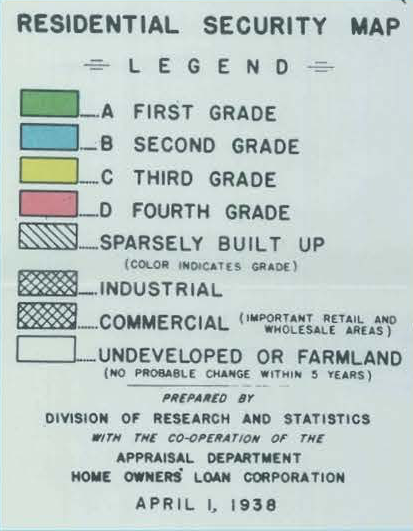
The "redlining" map layer shows a Residential Security Map for Brooklyn, created by the Home Owner’s Loan Corporation (HOLC) in 1938. The Federal Housing Administration (FHA) asked the HOLC, beginning in 1935, to rate the risk of lending money in different neighborhoods of 239 cities across the nation. Communities were rated as A, B, C, or D, with D-rated communities marked in red. The basis for these classifications, noted in 'area descriptions,' was largely racial bias, and xenophobia. While many white immigrant communities were given a D or “hazardous” rating - like East New York, which was primarily Jewish and Italian in the 1930s - the process was also explicitly anti-black, in that almost all areas that received a D rating had “Negro” residents noted as part of that justification, and this sometimes made the difference between an area getting a C or D rating.
As the HOLC's maps were released, they were frequently used as a justification for denying loans and limiting investment in D-rated communities, while the federal government insured home loans in suburban areas, where people of color were prevented from buying homes. This practice would later be termed "redlining."
Organizers achieved one of the major legislative victories of the Civil Rights Movement when President Johnson signed the Fair Housing Act into law, as part of the 1968 Civil Rights Act. It made redlining illegal, though there is evidence that the practice continues today. Between 1935 and 1968, 98% of the home loans that were insured by the federal government went to white Americans, helping them to build wealth and enter the middle class.
